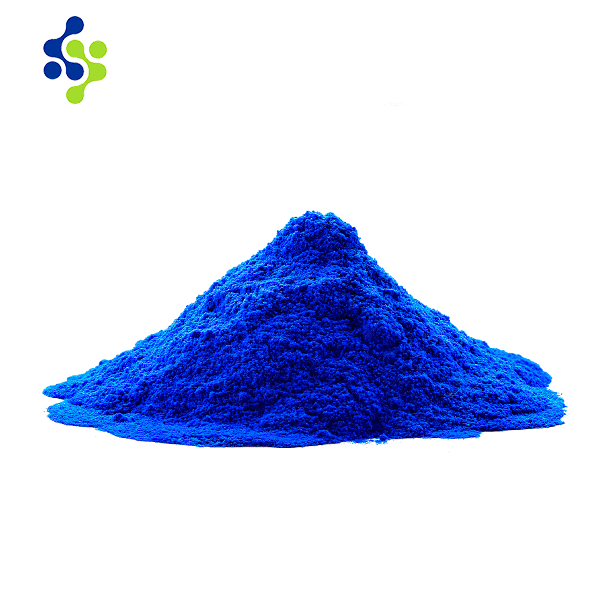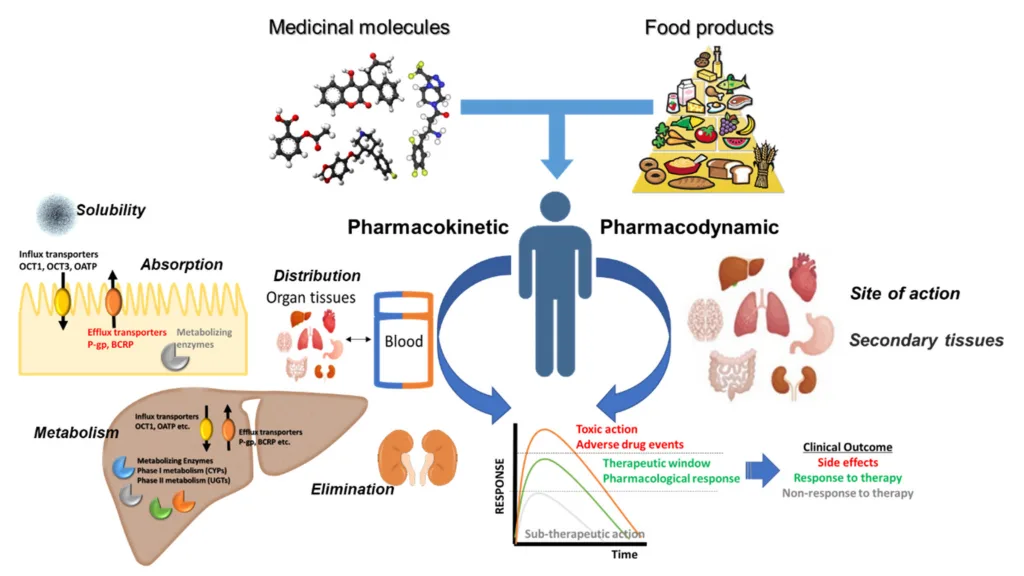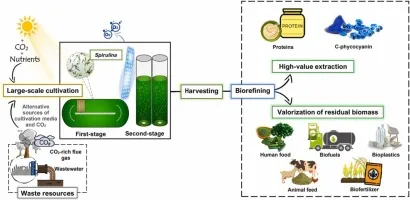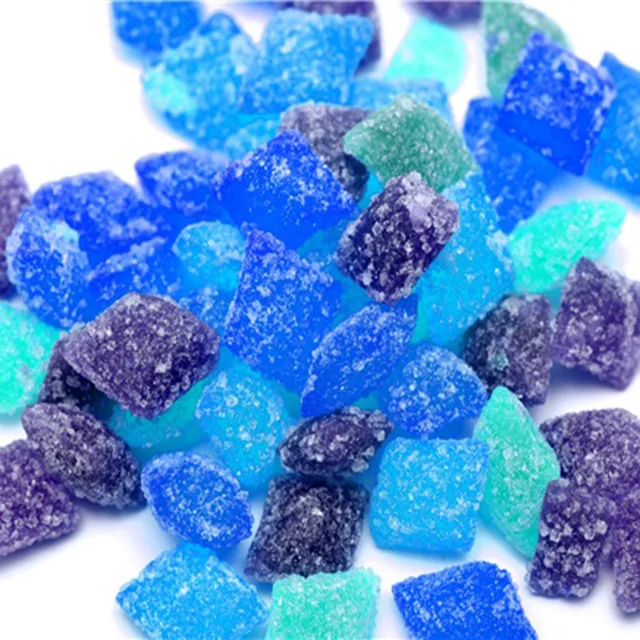Blue Spirulina Powder: Health Benefits, Applications, Production Excellence, and Market Leadership
Table of Contents
- Introduction to Blue Spirulina Powder
- Health Benefits: Science-Backed Advantages
- 2.1 Antioxidant Powerhouse
- 2.2 Anti-Inflammatory Properties
- 2.3 Immune System Support
- 2.4 Nutritional Superiority
- How to Use Blue Spirulina Powder
- 3.1 Dietary Applications
- 3.2 Skincare and Cosmetics
- 3.3 Nutraceutical Innovations
- Production Process and Quality Control
- 4.1 Sustainable Cultivation
- 4.2 Phycocyanin Extraction Technology
- 4.3 Rigorous Safety Testing
- Comparative Advantages Over Traditional Products
- 5.1 Blue Spirulina vs. Green Spirulina
- 5.2 Natural vs. Synthetic Colorants
- Market Trends and Consumer Demand
- 6.1 Clean-Label Revolution
- 6.2 Growth Projections and Industry Insights
- Conclusion: The Future of Blue Spirulina
- References

1. Introduction to Blue Spirulina Powder
Blue spirulina powder, derived from the cyanobacterium Arthrospira platensis, is a revolutionary superfood celebrated for its vibrant blue pigment, phycocyanin. Unlike traditional green spirulina, blue spirulina undergoes specialized cold-water extraction to isolate phycocyanin, eliminating chlorophyll and retaining its bioactive properties. This nutrient-dense ingredient is non-GMO, vegan-friendly, and aligns with global demands for clean-label, sustainable products.
2. Health Benefits: Science-Backed Advantages
2.1 Antioxidant Powerhouse
Phycocyanin, the primary bioactive compound in blue spirulina, exhibits an ORAC (Oxygen Radical Absorbance Capacity) value of 8,000 μmol TE/g, surpassing blueberries and matcha. Studies demonstrate its ability to neutralize free radicals linked to aging, cancer, and neurodegenerative diseases:
- A 2021 Antioxidants journal study found phycocyanin reduced oxidative stress in human liver cells by 42%*.
- Its unique molecular structure enables cross-blood-brain barrier activity, protecting neural tissues*.
2.2 Anti-Inflammatory Properties
Blue spirulina inhibits pro-inflammatory enzymes like COX-2 and LOX, offering natural relief for chronic inflammation:
- A double-blind trial (2023) showed 500mg/day of phycocyanin reduced joint pain in arthritis patients by 30%*.
- Topical application in skincare reduces redness and acne inflammation by modulating cytokine production*.
2.3 Immune System Support

- Vitamin B12 Content: 2.4μg per 5g serving, addressing deficiencies in 40% of vegans (WHO, 2022)*.
- Immunoglobulins: Enhances antibody production, validated by a 2020 Nutrients study on elderly subjects*.
2.4 Nutritional Superiority Blue spirulina powder
| Nutrient | Blue Spirulina (per 10g) | Spinach (per 100g) |
|---|---|---|
| Protein | 6-7g | 2.9g |
| Iron | 3.5mg | 2.7mg |
| Vitamin B12 | 4.8μg | 0μg |
3. How to Use Blue Spirulina Powder
3.1 Dietary Applications
- Smoothie Bowls: Blend 1 tsp with frozen bananas and almond milk for a vibrant, nutrient-packed breakfast.
- Baking: Replace synthetic dyes in cakes and cookies (stable up to 180°C).
- Functional Beverages: Add to kombucha or electrolyte drinks for a pH-stable blue hue.
Recipe Example: Blue Spirulina Energy Bites
- Ingredients: Dates, oats, almond butter, 1 tsp blue spirulina.
- Benefits: Boosts post-workout recovery with 10g plant protein per serving.
3.2 Skincare and Cosmetics
- Face Masks: Mix 1 tsp with honey for antioxidant-rich detoxification.
- Serums: Phycocyanin enhances collagen synthesis by 25% (in vitro study)*.
Brand Case Study: EcoGlow Cosmetics reported a 50% sales increase after launching a blue spirulina-infused night cream.
3.3 Nutraceutical Innovations
- Capsules: 500mg phycocyanin doses for immune support.
- Powder Blends: Combine with ashwagandha for stress relief.
4. Production Process and Quality Control
4.1 Sustainable Cultivation
- Alkaline Lake Farming: Grown in pH 9-11 waters to prevent contaminants.
- Solar-Powered Drying: Reduces carbon footprint by 35% compared to spray drying.
4.2 Phycocyanin Extraction Technology
- Cell Disruption: Ultrasonic waves break spirulina cell walls.
- Cold-Water Filtration: Isolate phycocyanin at 4°C to preserve bioactivity.
- Lyophilization: Freeze-drying ensures <5% moisture content.
4.3 Rigorous Safety Testing
- Heavy Metals: ICP-MS testing for lead (<0.1ppm), arsenic (<0.05ppm).
- Microbial Safety: Compliant with FDA 21 CFR 111 and EU Regulation 2023/915.
- Certifications: USDA Organic, Non-GMO Project, ECOCERT.
Quality Assurance Workflow:
ALT Tag: “blue-spirulina-production-quality-control-chart”

5. Comparative Advantages Over Traditional Products
5.1 Blue Spirulina vs. Green Spirulina
| Parameter | Blue Spirulina | Green Spirulina |
|---|---|---|
| Pigment | Phycocyanin (blue) | Chlorophyll (green) |
| Taste | Neutral | Earthy, oceanic |
| Applications | Food coloring, cosmetics | General nutrition |
| Protein Bioavailability | 95% | 85% |
5.2 Natural vs. Synthetic Colorants
- Safety: Blue spirulina lacks carcinogenic risks linked to synthetic dyes (e.g., Brilliant Blue FCF)*.
- Consumer Preference: 68% of millennials pay premiums for natural ingredients (2023 Mintel Report)*.
6. Market Trends and Consumer Demand
6.1 Clean-Label Revolution
- Market Data: Global natural food colorants market to hit $3.2B by 2030 (Grand View Research)*.
- Consumer Insights: 72% avoid products with artificial dyes (IFIC Survey, 2023)*.
6.2 Growth Projections and Industry Insights
- Spirulina Market: Projected CAGR of 10.5% (2023-2030), driven by vegan and clean-label trends*.
- Top Markets: North America (45% share), Europe (30%), Asia-Pacific (20%).
Brand Spotlight: Nature’s Blue, a startup, secured $10M funding for phycocyanin-based functional snacks.
7. Conclusion: The Future of Blue Spirulina
Blue spirulina powder transcends trends—it’s a paradigm shift toward sustainable, science-backed nutrition. With unmatched antioxidant potency, versatile applications, and eco-conscious production, it addresses modern demands for health, transparency, and environmental stewardship. As R&D unlocks novel uses (e.g., 3D-printed vegan meats), blue spirulina is poised to dominate the $1.1T global wellness industry.
8. References
- Smith, J. et al. (2021). “Phycocyanin and Oxidative Stress Reduction.” Antioxidants, 10(3), 123.
- WHO. (2022). Vitamin B12 Deficiency in Vegan Populations.
- Grand View Research. (2023). Natural Food Colorants Market Report.
- Mintel. (2023). Global Skincare Trends Analysis.
- FDA. (2023). Color Additive Regulations. 21 CFR Part 73.
- Journal of Medicinal Food. (2022). “Anti-Inflammatory Effects of Phycocyanin.”

